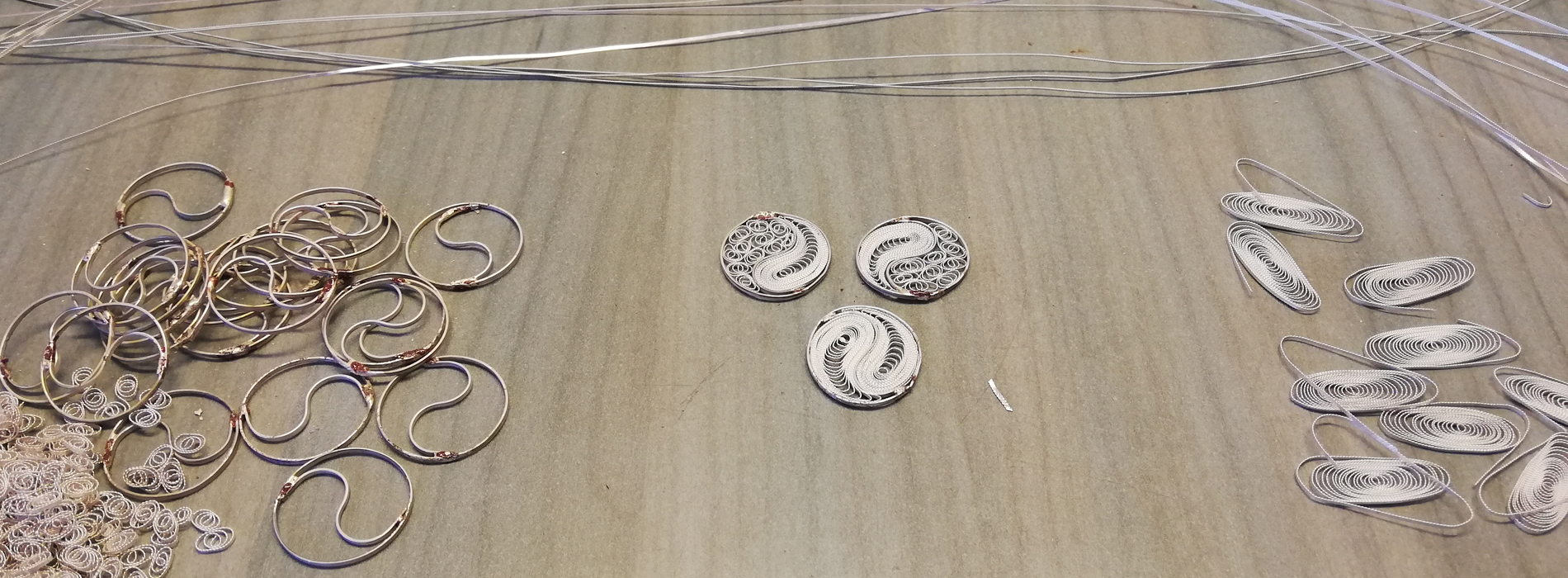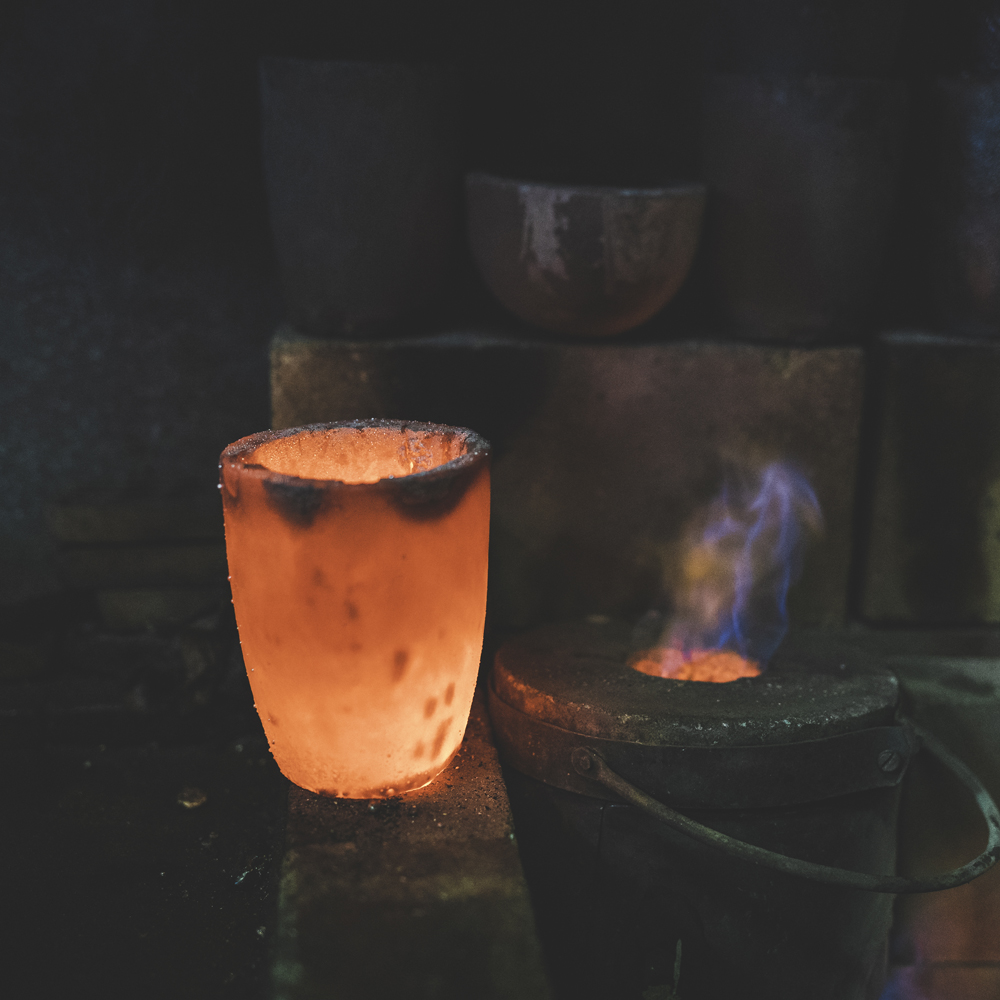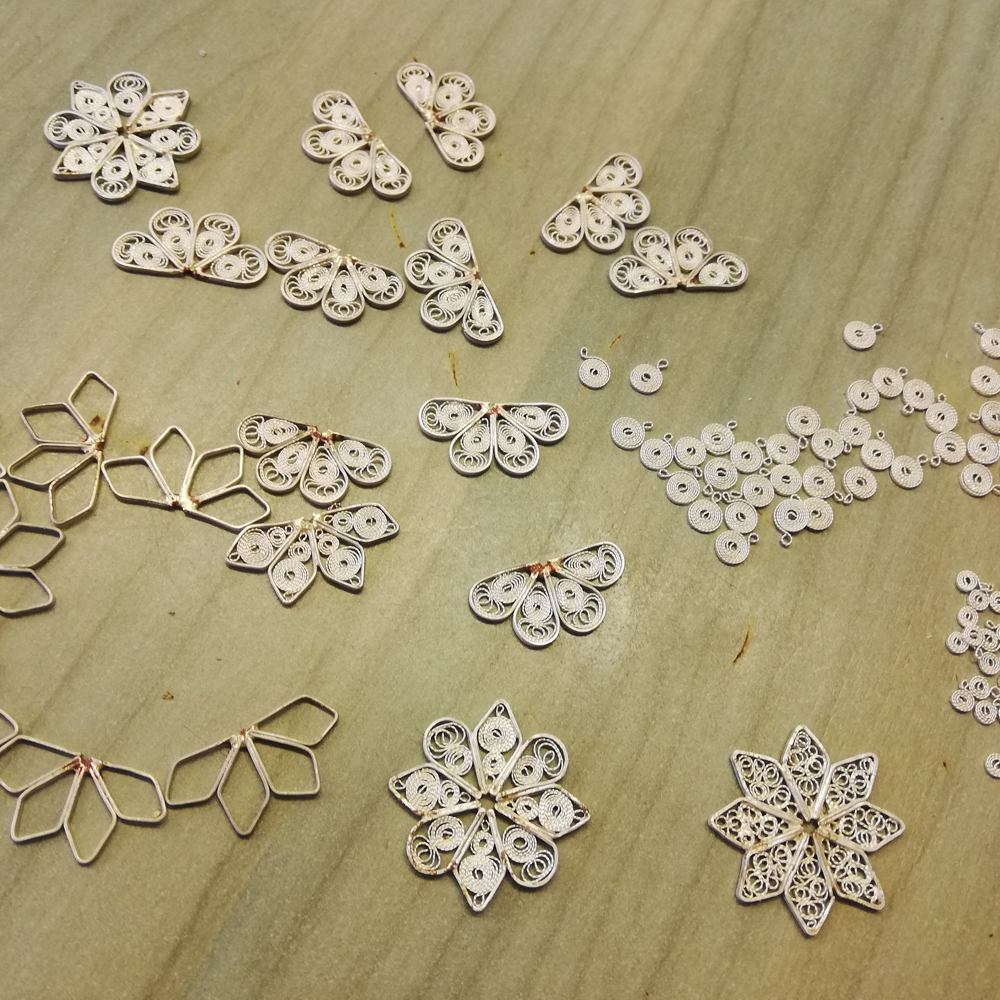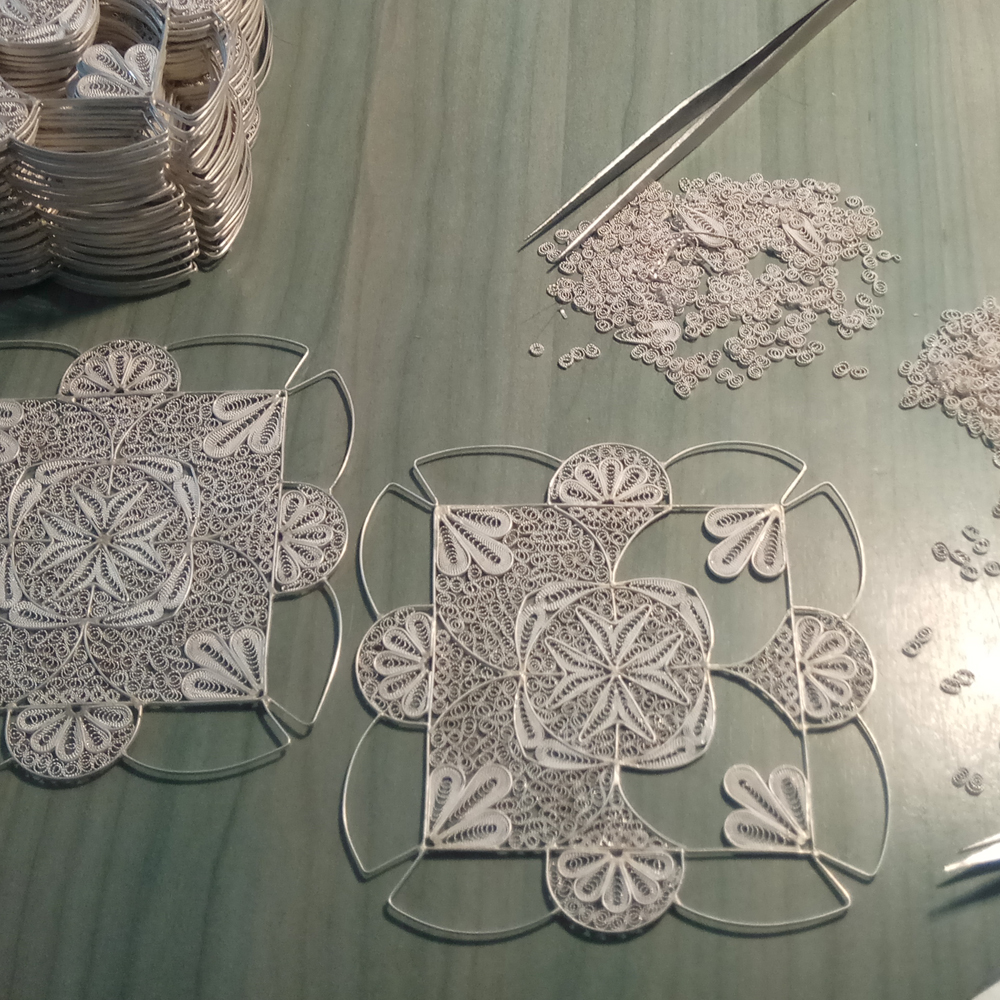The Art of Maltese Filigree: The Process
The creation of traditional Maltese filigree begins with the melting and mixing of pure gold or silver grains with a secondary metal, such as copper or zinc, in a high-temperature kiln. The type and amount of the added metal determine both the colour and carat of the final jewellery piece.
Once the molten alloy is ready, it is poured into a mould to form a solid ingot a few centimetres thick. This ingot is then pressed and stretched through a rolling mill to produce wires of various thicknesses. These wires serve as the raw material for both the outer framework and the decorative inner patterns.
Crafting the Filigree Patterns
The framework is shaped first, creating the border that will hold the intricate design. For the inner decoration:
-
Two ultra-fine wires are plaited (twisted) together, flattened, and heated.
-
These wires are then cut into short lengths, each one coiled into delicate spirals and scrolls.
-
Traditional Maltese patterns include “Għajn u Gorn,” “Matti,” “Ġenwiż,” and “Skraċċ”, each with distinct ornamental forms that reflect the rich heritage of the craft.
Using only tweezers and their fingers, highly skilled artisans carefully fill the framework, piece by piece, with these intricate designs, creating the signature openwork look of Maltese filigree.
Finishing the Jewellery
-
Once the design is complete, all components are soldered together using a special brazing alloy.
-
The finished piece is then cleaned in a hot sulphuric acid solution to remove any impurities.
-
After cleaning, the jewellery is polished in a rumbling machine to restore its shine.
-
Finally, the piece undergoes electroplating, giving it a smooth, radiant finish and enhancing its durability.






